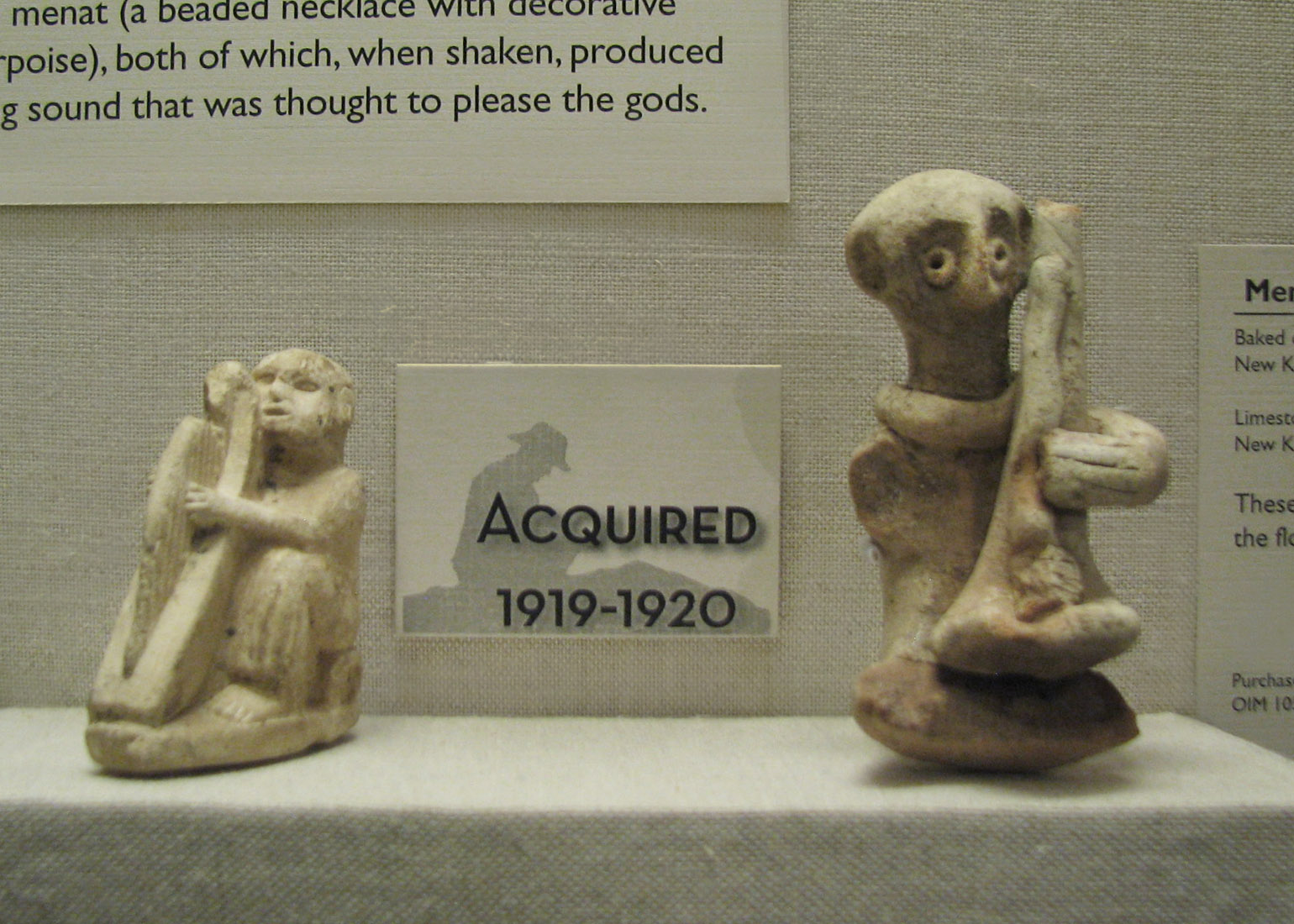The info card above the two figurines explains:
"The most common musical instruments in religious ceremonies were the sistrum (a type of rattle), and the menat (a beaded necklace with decorative counterpoise), both of which, when shaken, produced a rattling sound that was thought to please the gods."
And what would the harpists have been singing about? Foster and Foster reveal:
|
"Another kind of poem from the lyric genre is the Harper's Song. There are only a few of these, and they form a strange interlude in the literature; for they seem to question the sacred Egyptian principle of eternal life, urging the hearer to carpe diem, 'seize the day':
"Grieve not your heart, whatever comes,
let sweet music play before you;
Recall not the evil, loathsome to God,
but have joy, joy, joy, and pleasure!
|
"The harper's song from Inherkhawy's tomb says just this:
"All who come into being as flesh,
pass on...
Let your heart be drunk on the gift of Day
until that day comes when you anchor."
|
"Ancient Egyptian Literature", John L. Foster and Ann L. Foster, in Egyptology Today, edited by Richard H. Wilkinson, (Cambridge University Press, 2008), pages 215-216)
|
|



